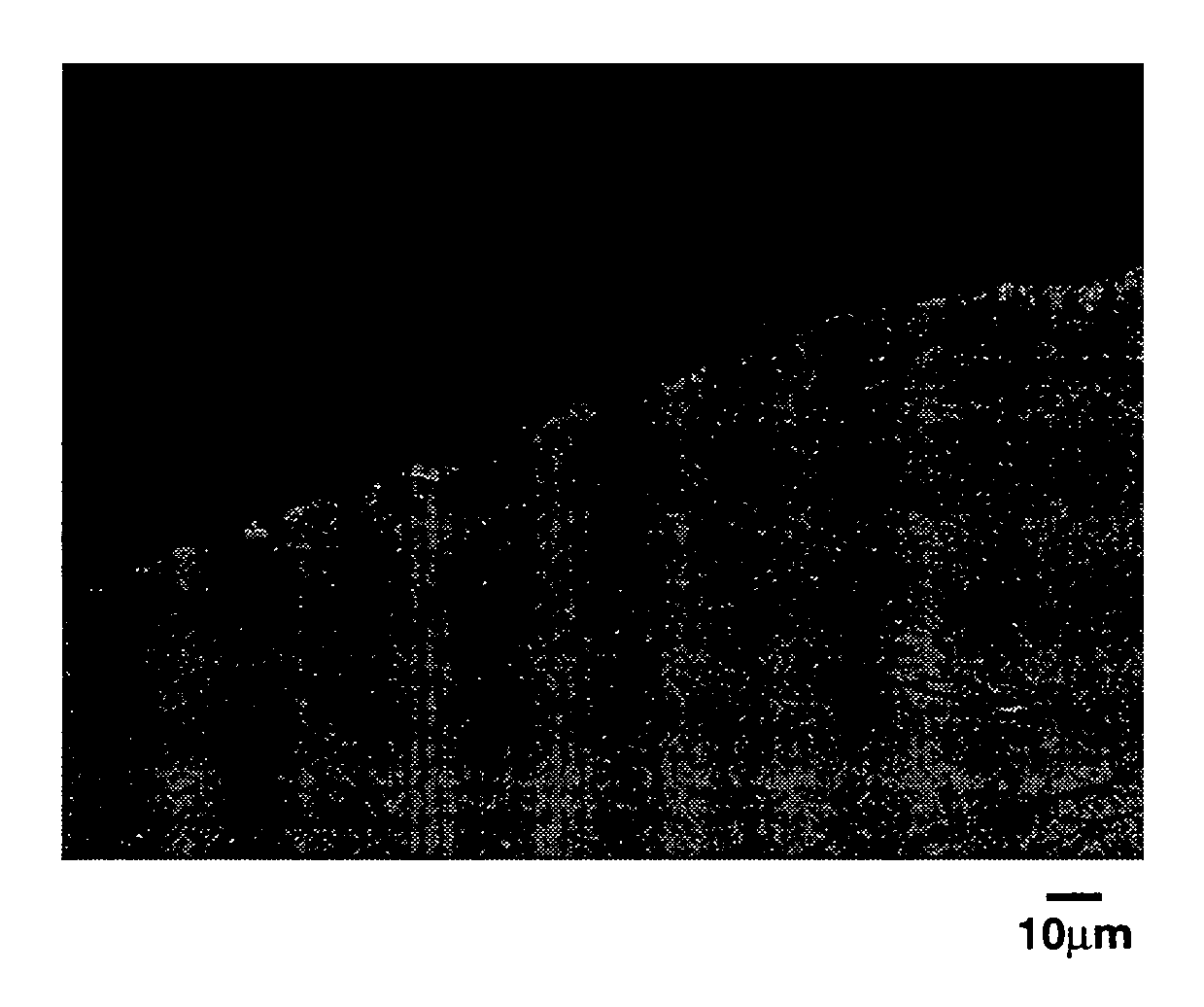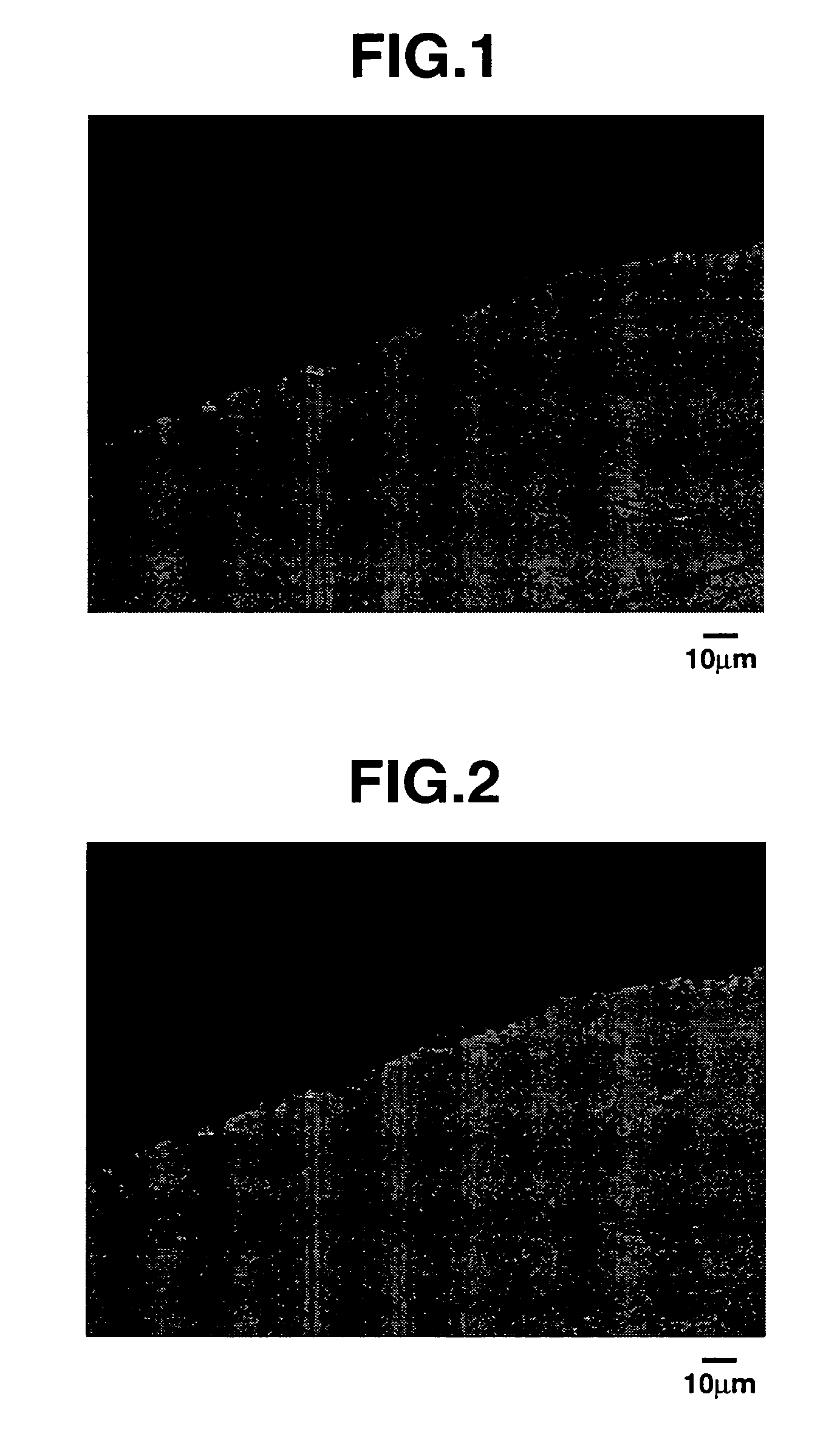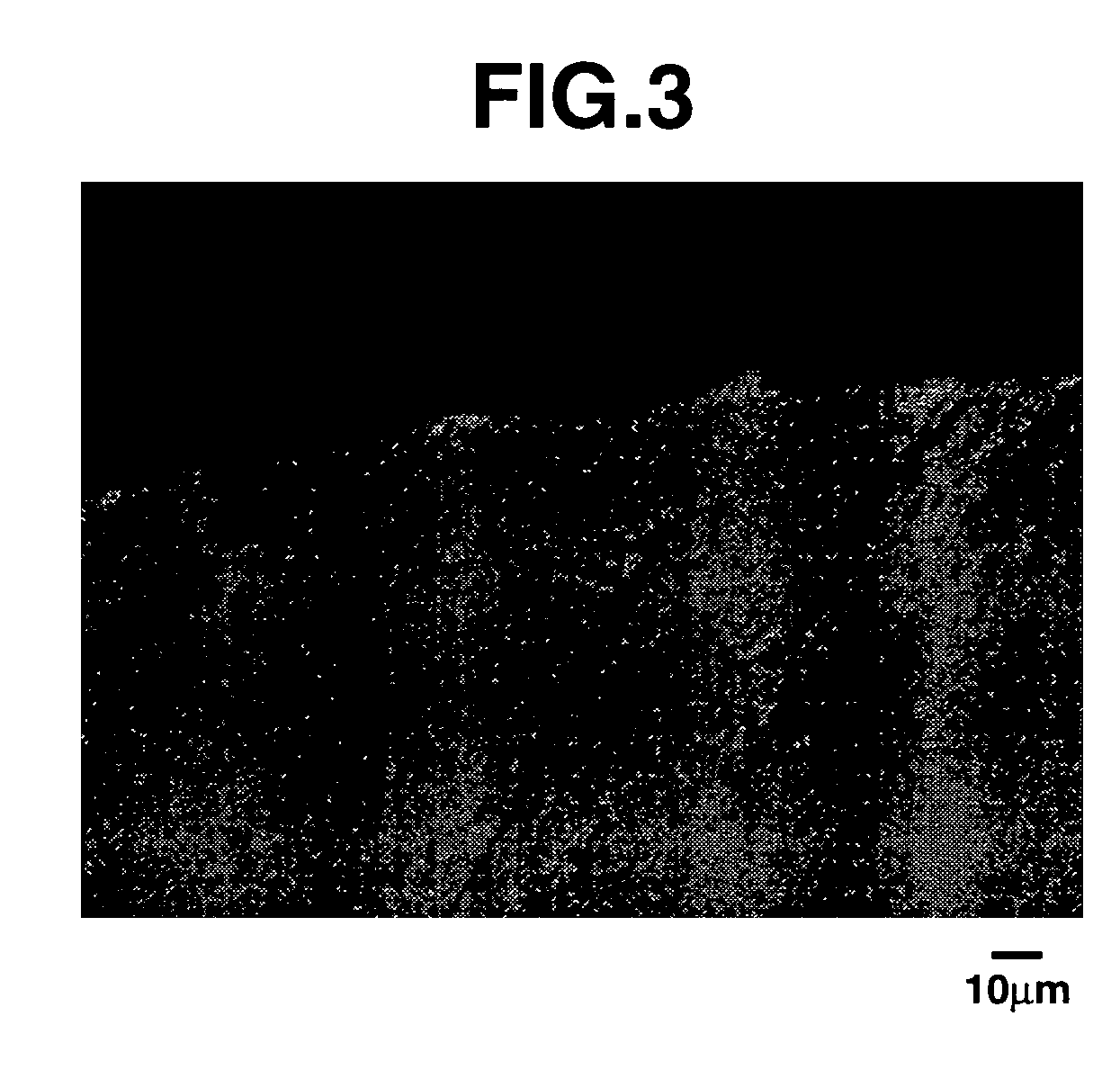Rare earth element sintered magnet and method for producing rare earth element sintered magnet
a technology of rare earth elements and sintered magnets, which is applied in the direction of magnetic materials, solid state diffusion coatings, magnetic bodies, etc., can solve the problems of affecting the use of magnet materials in such an atmosphere, prone to chipping when handled, and deterioration, cracking or cracking of magnet materials,
- Summary
- Abstract
- Description
- Claims
- Application Information
AI Technical Summary
Benefits of technology
Problems solved by technology
Method used
Image
Examples
example 1
[0044]A Sm2Co17-based magnet alloy was produced by formulating a starting material containing 25.0 wt % of samarium, 17.0 wt % iron, 4.5 wt % of copper and 2.5 wt % of zirconium, with the balance being cobalt. The starting material was placed in an alumina crucible and melted in an induction melting furnace under an argon atmosphere, then cast in a mold.
[0045]The resulting Sm2Co17-based magnet alloy was reduced to a size of about 500 μm or less with a jaw crusher and a Braun mill, after which it was milled to an average particle size of about 5 μm with a jet mill using a stream of nitrogen. The milled powder was molded with a magnetic field-generating press under a pressure of 1.5 t / cm2 within a magnetic field of 15 kOe. The resulting powder compacts were sintered in a heat treatment furnace under an argon atmosphere at 1190° C. for 2 hours, then solution-treated in argon at 1175° C. for 1 hour. Following the completion of solution treatment, the sintered compacts were quenched, the...
example 2
[0048]Sintered magnets were produced in the same composition and by the same method as in Example 1. As in Example 1, magnets measuring 5×5×5 mm were cut from the resulting sintered magnets. A 20 μm layer of copper was electroplated onto the resulting magnets under the same conditions as in Example 1. The plated magnets were heat treated at 550° C. for 12 hours in a vacuum (oxygen partial pressure, 1×10−2 Pa), then slowly cooled to room temperature and subsequently coated by spraying on an epoxy resin, yielding hydrogen gas test specimens. The magnetic properties of the test specimens were measured with a VSM. The hydrogen gas test specimens were subjected to a hydrogen gas test under the same conditions as in Example 1, then removed from the pressure vessel. Following removal, the appearance of the magnets was visually checked and their magnetic properties were measured with a VSM.
example 3
[0057]A Sm2Co17-based magnet alloy was produced by formulating a starting material containing 18.0 wt % of samarium, 7.0 wt % of cesium, 14.0 wt % of iron, 4.5 wt % of copper and 2.5 wt % of zirconium, with the balance being cobalt. The starting material was placed in an alumina crucible and melted in an induction melting furnace under an argon atmosphere, then cast in a mold.
[0058]The resulting Sm2Co17-based magnet alloy was reduced to a size of about 500 μm or less with a jaw crusher and a Braun mill, after which it was milled to an average particle size of about 5 μm with a jet mill using a stream of nitrogen. The milled powder was molded with a magnetic field-generating press under a pressure of 1.5 t / cm2 within a magnetic field of 15 kOe. The resulting powder compacts were sintered in a heat treatment furnace under an argon atmosphere at 1170° C. for 2 hours, then solution-treated in argon at 1155° C. for 1 hour. Following the completion of solution treatment, the sintered comp...
PUM
| Property | Measurement | Unit |
|---|---|---|
| wt % | aaaaa | aaaaa |
| wt % | aaaaa | aaaaa |
| thickness | aaaaa | aaaaa |
Abstract
Description
Claims
Application Information
 Login to View More
Login to View More - R&D Engineer
- R&D Manager
- IP Professional
- Industry Leading Data Capabilities
- Powerful AI technology
- Patent DNA Extraction
Browse by: Latest US Patents, China's latest patents, Technical Efficacy Thesaurus, Application Domain, Technology Topic, Popular Technical Reports.
© 2024 PatSnap. All rights reserved.Legal|Privacy policy|Modern Slavery Act Transparency Statement|Sitemap|About US| Contact US: help@patsnap.com










